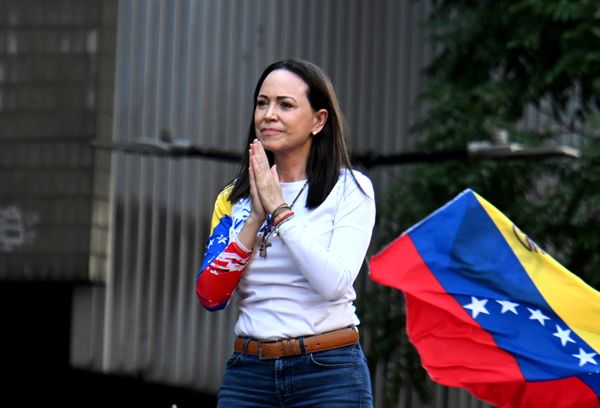
The Dow Jones Industrial Average gained 218 points on Tuesday, hitting a record high of 46,924.74. Dow stocks pushing the index higher included 3M (MMM), Coca-Cola (KO), and General Motors (GM), all of which delivered strong quarterly results.
On the NYSE yesterday, 68 stocks hit new 52-week highs, while 20 hit new 52-week lows. On Nasdaq, 187 stocks hit new 52-week highs, while 73 hit new 52-week lows.
A bunch of SPACs (special purpose acquisition companies) hit new 52-week highs--three on NYSE and 22 on Nasdaq--an indication that stocks have become pricier. In the past, investors have poured money into these blind pools as an alternative to moving their funds to cash.
SPACs were an interesting vehicle for those wanting to back prominent investors, CEOs, and other notable individuals. However, the abuses that occurred in 2021 prompted many investors to take a step back. They’re now piling back in.
What could possibly go wrong?
Because there were so many SPACs hitting new 52-week highs on the Nasdaq, I’ll focus on the three that hit new 52-week highs on the NYSE: American Exceptionalism Acquisition Corp. (AEXA), Pyrophyte Acquisition Corp. II (PAII), and Rithm Acquisition Corp. (RAC).
Should you buy any of the three? Here’s my two cents.
American Exceptionalism Acquisition Corp. (AEXA)
American Exceptionalism Acquisition Corp. hit a new 52-week high of $11.91 on Tuesday. That’s 19.1% higher than the SPAC’s $10 offering price. Its shares started trading on Sept. 26.
AEXA Sponsor LLC sponsored the SPAC, an affiliate of Social Capital, the Silicon Valley tech investment firm founded by Chamath Palihapitiya, often referred to as the “SPAC King,” a less-than-flattering descriptor.
Palihapitiya launched his first SPAC in 2017. It became Virgin Galactic (SPCE), the space company backed by billionaire Richard Branson. Its shares now trade below $4. I believe AEXA is his 11th SPAC.
Like all SPACs, AEXA must complete a business combination with an operating company within a specified timeframe. In this case, it’s 18 months. Very standard.
Here’s what AEXA’s prospectus says about American exceptionalism:
“I believe the biggest gains in the future will come from companies that are involved in fixing the fundamental risks that come from our interconnected global order while reinforcing American exceptionalism.”
The four areas it will focus its search on are Energy Production, AI, Decentralized Finance, and Defense.
One of the past weaknesses of SPACs was their structure, which favoured the founders at the expense of retail investors purchasing units in the IPOs.
Palihapitiya has tried to fix this by doing two things: 1) There are no warrants attached, and 2) his compensation only vests if the shares increase by 50% after completing a combination.
They’re positive steps. The problem is that it doesn’t solve some of the issues surrounding SPACs.
For example, warrants aren’t necessarily a bad thing; their quality depends on how many shares you can purchase, the price of the shares, and the time allowed to exercise the warrants.
Additionally, the conditions under which the SPAC redeems the warrants, as well as the expiration date of the warrants, are also factors to consider.
But let's assume that attaching no warrants to the IPO is a good thing because shareholders aren’t diluted. That doesn’t entirely address the most significant issue facing SPACs, which is the founders' Class B shares, described as compensation in AEXA’s prospectus.
Palihapitiya says that he’s solved this with the 50% appreciation post-combination. He’s saying that if the deal closed today, based on the new 52-week high of $11.91, the shares would have to rise to $17.87 before AEXA Sponsor LLC shares, which he controls, vest.
Pg. 178 of the prospectus describes the vesting of the class B founder shares.
One-third of the Class B founders' shares will convert to Class A common shares if the share price of the Class A shares trades at or above $15 for 20 consecutive days within a 30-day trading period. That is the first vesting price; one-third converts at $17.50, and the final third at $20.
Let’s assume that you acquired 100 Class A AEXA shares in the SPAC’s IPO. You paid $10 a share for them. It then combines with a company on Sept. 26, 2026, one year from its first trading day. They’re trading at $15. On March 30, 2027, the Class A shares hit $20.
Your return on investment is 100% over 18 months, an annualized return of 66.7%. I’ll take that every day and twice on Sunday.
Palihapitiya and the sponsor’s return?
The Class B founders' shares are convertible to Class A common stock on a one-for-one basis. Therefore, all three tranches would vest by March 30, 2027, resulting in 14,785,714 Class A shares, valued at $295.7 million. Based on the $25,000 it paid for the Class B founders’ shares, its return on investment would be 11,827.6% or 7,885% annualized.
However, the sponsor forfeited 1,928,571 of its Class B founders’ shares because the underwriters exercised their full over-allotment. That reduces the return to 10,284.7% or 6,856% annualized.
It doesn’t seem like Palihapitiya’s made much of an improvement to the SPAC structure.
Given the man’s track record with SPACs, I’d stay very far away from AEXA shares.
Pyrophyte Acquisition Corp. II (PAII)
I’ll admit I went overboard on the AEXA section, but it’s essential to understand that SPACs, as far as I can tell, remain vehicles of wealth creation for people who are already rich. Maybe I’m wrong, but I don’t believe you would have ever seen Warren Buffett doing one of these bad boys.
Pyrophyte Acquisition Corp. II hit a new 52-week high of $10.27 on Tuesday. That’s not much higher than the SPAC’s $10 offering price.
Pyrophyte Acquisition Corp. II Sponsor LLC sponsored the SPAC. It completed a traditional SPAC IPO on July 18, 2025, selling 17.5 million units at $10 each, raising $175 million. It then raised an additional $25.4 million from the overallotment exercise by underwriters and a private placement of $5.05 million in warrants.
I say 'traditional' because the unit price of $10 included one Class A common share and one-half of a redeemable warrant. Each whole warrant allows the investor to buy a second Class A common share for $11.50. Pretty boiler-plate stuff.
It is the second SPAC from Bernard J. Duroc-Danner, a longtime energy executive who built Weatherford International and Grant Prideco. The first, Pyrophyte Acquisition Corp., had its trading suspended on the NYSE in October 2024 for failing to complete a combination within three years of its listing. The SPAC extended its deadline to April 29, 2026. The sponsor pays nearly $76,000 per month into the trust account to keep the SPAC alive.
Duroc-Danner and the rest of the SPAC management team look to combine with an existing energy business. That was the plan for the first SPAC, and look how that turned out. It has 24 months to complete a combination. It’s still got time.
The SPAC’s Class A common shares and warrants started trading separately on Sept. 8. Unitholders had the option to keep the two together. All three hit new 52-week highs yesterday.
Given the troubles of the first SPAC, I would not touch the second, despite Duroc-Danner’s pedigree.
Rithm Acquisition Corp. (RAC)
Rithm Acquisition Corp. went public on Feb. 26, 2025, selling 23 million units (including 3 million units exercised by underwriters for overallotment) at $10 per unit, raising $230 million.
On April 21, the SPAC’s Class A common shares and warrants began trading separately. RAC hit a new 52-week high of $10.40.
Rithm Acquisition Corp. Sponsor LLC sponsored the SPAC. The unit price of $10 included one Class A common share and one-third of a redeemable warrant. Each whole warrant allows the investor to buy a second Class A common share for $11.50.
The management team behind Rithm Capital (RITM) and Rithm Property Trust (RPT) is the sponsor of the SPAC.
The former was founded as New Residential Investment Corp. by Fortress Investment Group in 2013 to participate in the mortgage servicing rights business. It rebranded as Rithm Capital in June 2022, following the company's decision to bring its management in-house.
The latter acquires, invests in and manages re-performing loans and non-performing loans secured by single-family residences and commercial properties. Neither stock has performed well since going public.
Given the SPAC management’s experience in financial services and real estate, it is targeting a combination with businesses in these two industries. In addition, it could merge with a company involved in infrastructure technology. It has until February 2027 to complete a transaction.
In this case, the sponsor acquired 5.75 million units for $25,000. In addition, it acquired 600,000 private placement units for $6 million.
The Class B founders' shares are convertible to Class A common stock on a one-for-one basis. Based on the $10.40 share price for Class A common and $0.69 for the warrants, the sponsors’ return on investment to date is 1,018.7% or 1,528.1% annualized.
It’s not quite in Palihapitiya’s league, but it’s still excessive, nonetheless.
I fail to see how the same people who’ve delivered little for Rithm Capital and Rithm Property Trust shareholders will miraculously turn the yet-to-be-determined acquired company into a gold mine.
Caveat emptor.







